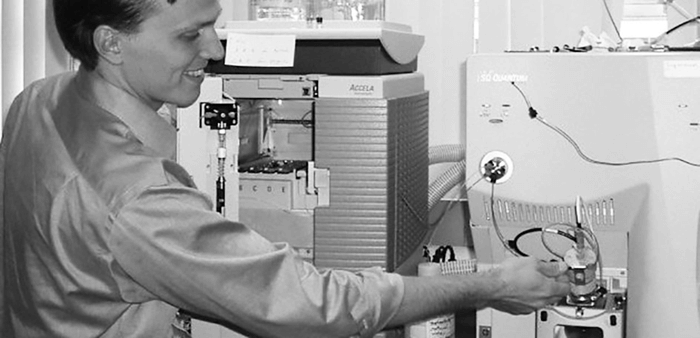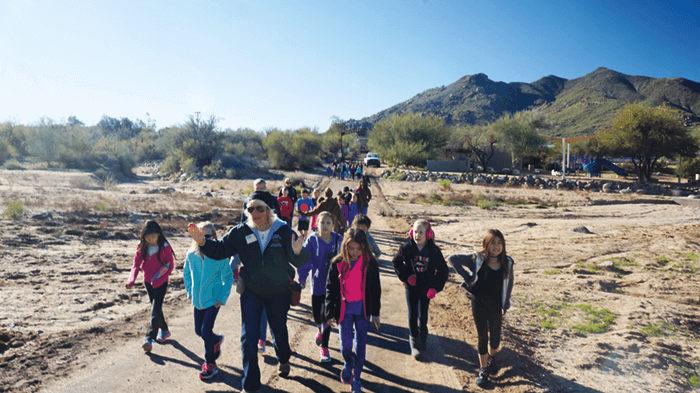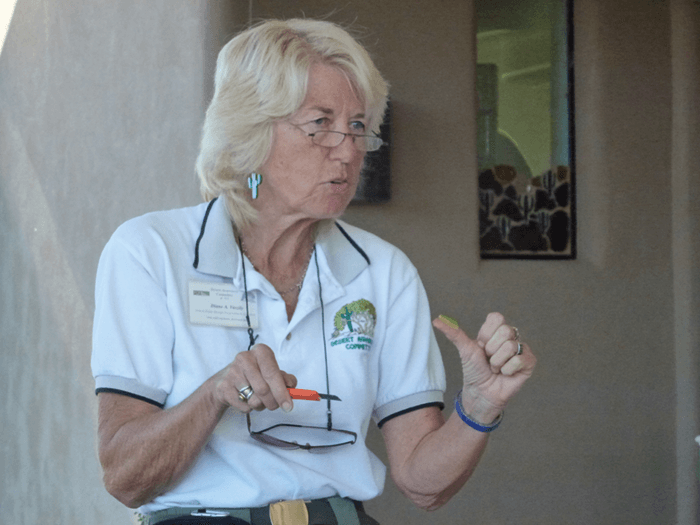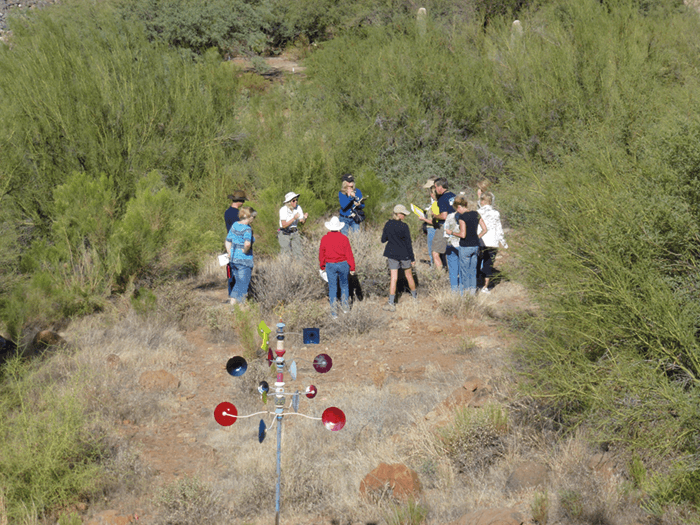
As a scientist, you are starved without curiosity – asking a question that other people don’t ask is what makes you a scientist. That’s a bold statement, but it’s based on my experience moving from a lab where we had total creative license (super innovation), to a lab where we had to answer questions quickly, but not necessarily innovatively. The transition was a struggle, until I figured out how to bring the curiosity back into my work. I got curious about chemistry as an undergrad. The more time I devoted to learning about chemistry, the more I enjoyed it. I could visualize the chemical structures in my head, and I became fascinated about what happens at the molecular level. I was lucky to have a PI who gave me both the opportunity and the trust to run a mass spec instrument by myself as part of a project (once he knew I wouldn’t damage it!).
Now I’m a mentor, I think curiosity is probably one of the most important things a student can have. Research takes a long time and it can get frustrating when things don’t work the way you expected, so you have to keep asking questions and be able to think through problems creatively. I also think curiosity helps you relax – when you have a new idea, I’m quite certain it changes your brain chemistry, and gives you a boost!
You also need a boss who will keep you engaged in the actual science of discovery, someone who will nurture that curiosity; one, by asking questions, and two, by helping you keep the focus and by trying to remove distractions. Presenting a talk is a really good exercise, because organizing your research helps you see it in a different light and spot any gaps. For curiosity to truly flourish, you must have the tools and training necessary to answer the question; sometimes a big investment or the right collaboration is required, but there is no guarantee of success. For example, I have been using airbrushing to spray into the ion source – I noticed that an electric current can impart too much energy, causing fragmentation, and wanted to create clusters that weren’t ionized by electric current. Airbrushing doesn’t have any electricity, but it still produces fine droplets, and I thought that could be a unique way to do it. So far it hasn’t worked – that’s when passion or curiosity, rather than funding, keeps you focused. Having said that, one of the dangerous parts of science is that sometimes you don’t know when to give up! As a scientist, at some point you have to be prepared to say, “I can’t do that.” That’s the danger in analytical chemistry – some people believe there’s a definitive answer every time. When I first got into imaging, my collaborator, who had done some work on nerve damage, wanted to look for certain compounds. We were looking at very small molecules in tissue, hoping to see what their distribution was and how they were interacting. We and tried every which way to do it. Using MALDI, we were able to look for them but could never figure out if they were there. It was frustrating, but we had to move on to focus on other important aspects, such as trying to understand how the lipids are being altered as a result of a drug, even if you couldn’t see the drug itself. In the clinical field in particular, it’s difficult to pursue projects purely driven by curiosity and without a direct application. We often have to work with applied technology, but I think it’s key that the students involved go beyond looking at the applied questions and think about the fundamentals too. Finding the time requires balance, and so it’s up to me to devote the time to it, to say I think it’s important and interesting enough to me. Also, because I work in the clinical arena, I want to make sure the questions we answer and the methods we develop are reliable enough to measure what’s going on inside a patient. The last thing you want to do is give the wrong result.

The youngest people are usually the most curious. Those who work with preschool children know that they have insatiable curiosity which provides unlimited opportunities to share. Toys for young children provide manipulatives that allow students to solve puzzles and indulge in their natural curiosity. However, as they get older, the ‘hands-on’ apparatus and techniques, especially in classrooms, are often replaced with book reading and lectures. As a teacher, the goal is to keep older students interested in seeking out knowledge, not forcing it onto them. If they are driven by to their own curiosity, they follow their own lead rather than yours. Demonstrations – showing something happening, discussing it briefly, then allowing students to create a variation of the event – offer a chance to foster curiosity. Enabling the students to engage in their own experiments by making bubbles with various amounts and/or brands of soap solution, for example, then varying the sizes and shapes of the bubble holders, is an activity that covers a range of topics from surface tension to surfactants. And the enjoyment from blowing bubbles has no age limit! As the students increase in age, making the topic relevant to the learner becomes more critical. Curiosity seems to decline between the ages of 11 and 14 simply because students that age do not see the relevance of what they are learning. Relating the bubble topic to shampoos and conditioners will bring their heads up out of their notebooks. Pigmentation can be addressed through make-up and hair dye. Rocks and minerals have endless possibilities when associated with gemstones.


I speak from experience. As a biologist teaching earth science, analyzing gemstones by comparing birthstones brought eighth graders to attention, piquing their curiosity (and mine) so that we all wanted to know how, where and when they were formed. This led to analyzing the elements that contribute to the color of the gems as well as every other element found in the earth. I have found that this strategy of starting with a gemstone and working backwards to its formation, strata, parent rock associations and locations has aroused insatiable curiosity in people aged from 6–92. How does one keep curiosity alive as an educator? I believe it is always in the presentation, the first contact with your students on any given day. Not only is a teacher tasked with reaching benchmarks, (also known as knowledge), but with tapping into the curiosity that lies right beneath the surface. Creating a “what is that?” or “how do you do that?” moment is surely the first thing an instructor needs to consider – teachers need to be entertainers as well as educators. Having come from a professional rather than an educational background after graduation, most of what I did with students in the classroom was based on the way I learned – experientially, not via lectures or textbooks, important and necessary as more formal learning is. My goal was to get them so curious that they actively pursued the answers. To this day, former students always remark on the curiosity that was awakened and kept alive in them throughout their time in my classes. What they don’t realize is that they taught themselves, because of the curiosity we developed together.




